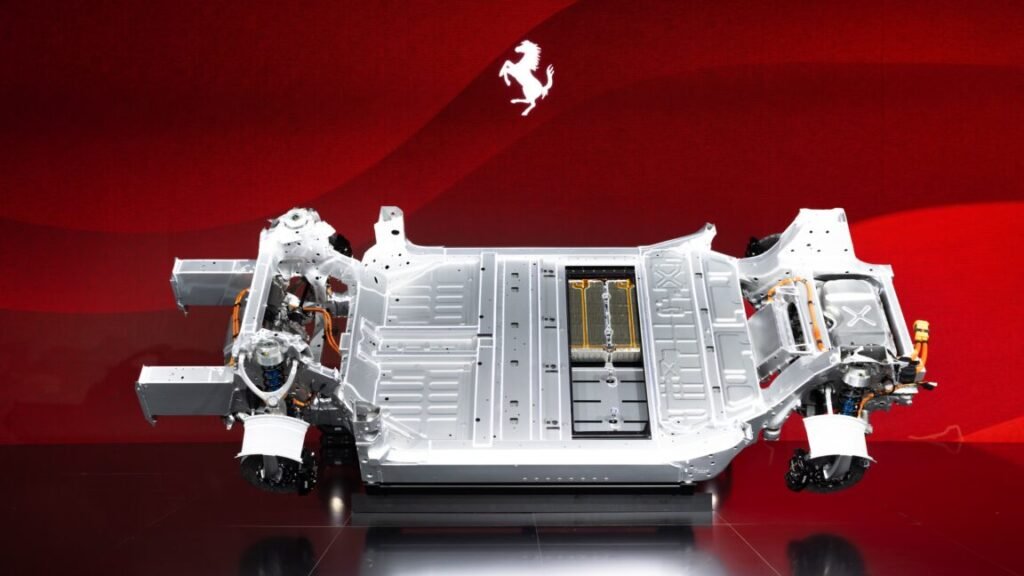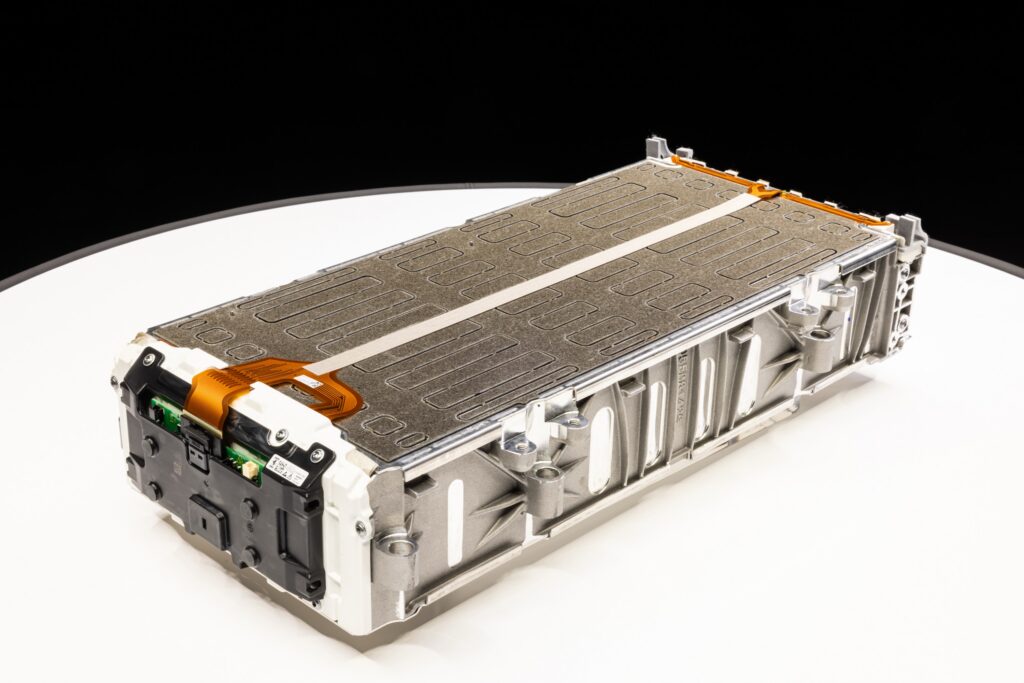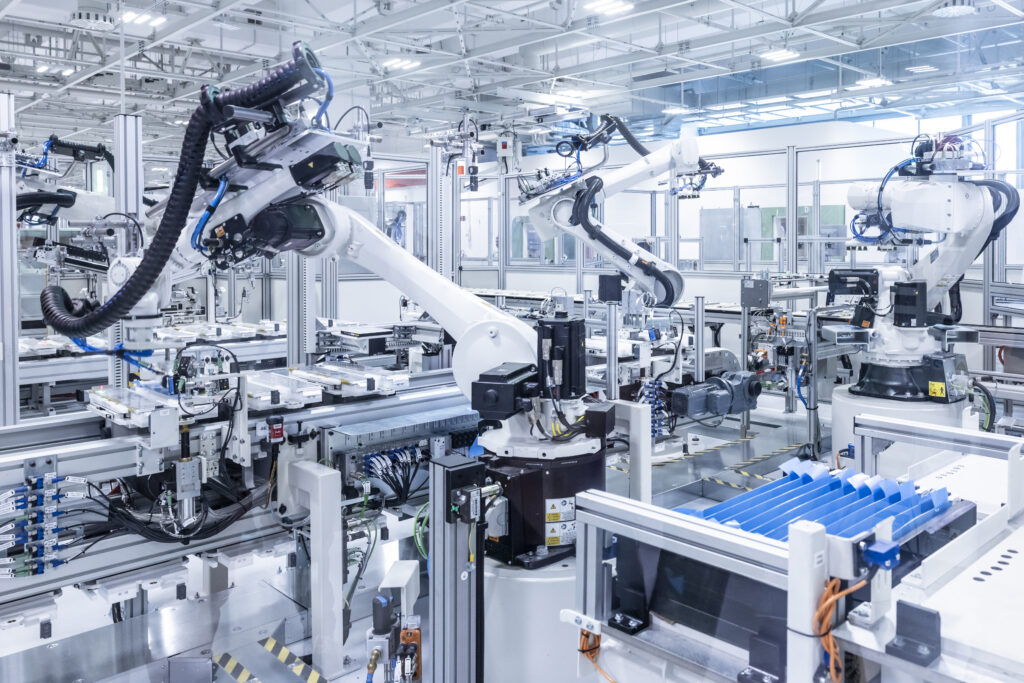The pack has a gross capacity of 122 kWh, with a pack power density of 195 Wh/kg. Specific energy density is 280 Wh/L, with a power density of 1.9 kW/L. Peak output for the pack, which operates at 800 V, is 1,113 hp (830 kW). That should translate to a 2.5–second 0–62 mph (0-100 km/h) time and a top speed of more than 192 mph (310 km/h), Ferrari told us. It will DC fast-charge at rates of up to 350 kW, which should add 70 kW in 20 min, we’re told. Like the hardware, Ferrari designed the battery monitoring system and cell supervision software entirely in-house.
You can see the pack’s 13+2 module layout here.
Ferrar
One of the Elettrica’s battery modules.
Ferrari
It has to feel like a Ferrari
Longitudinal acceleration. Lateral acceleration. Braking. Sound. Gear change. Those are the five elements that Ferrari considers necessary to imbue a car with “driving thrill,” and this EV will be no different. Longitudinal acceleration has mostly been addressed already. Controlling lateral acceleration, and the car’s ability to corner, is partly the job of a new third-generation active suspension system.
Where other OEMs might have gone for air springs or magnetorheological dampers, here you’ll find coilover spool valve dampers, which use a ball screw controlled by a 48 V electric motor to control ride height as well as bound and rebound. The setup is a refinement of that found in the Purosangue SUV and the F80 hypercar, but with a greater pitch on the ball screw that better controls vertical motions.
Additionally, the vehicle’s dynamic controller (operating at 100 Hz) and the inverters allow Ferrari to precisely control the amount of power and torque sent to each wheel as well as each corner’s suspension behavior. And there’s independent rear-wheel steering of up to 2.15 degrees; the system can counter-steer to the front wheels to increase agility, steer together with the front wheels at higher speed for directional stability, steer just a single wheel if needed, or increase the toe-in when driving in a straight line.



